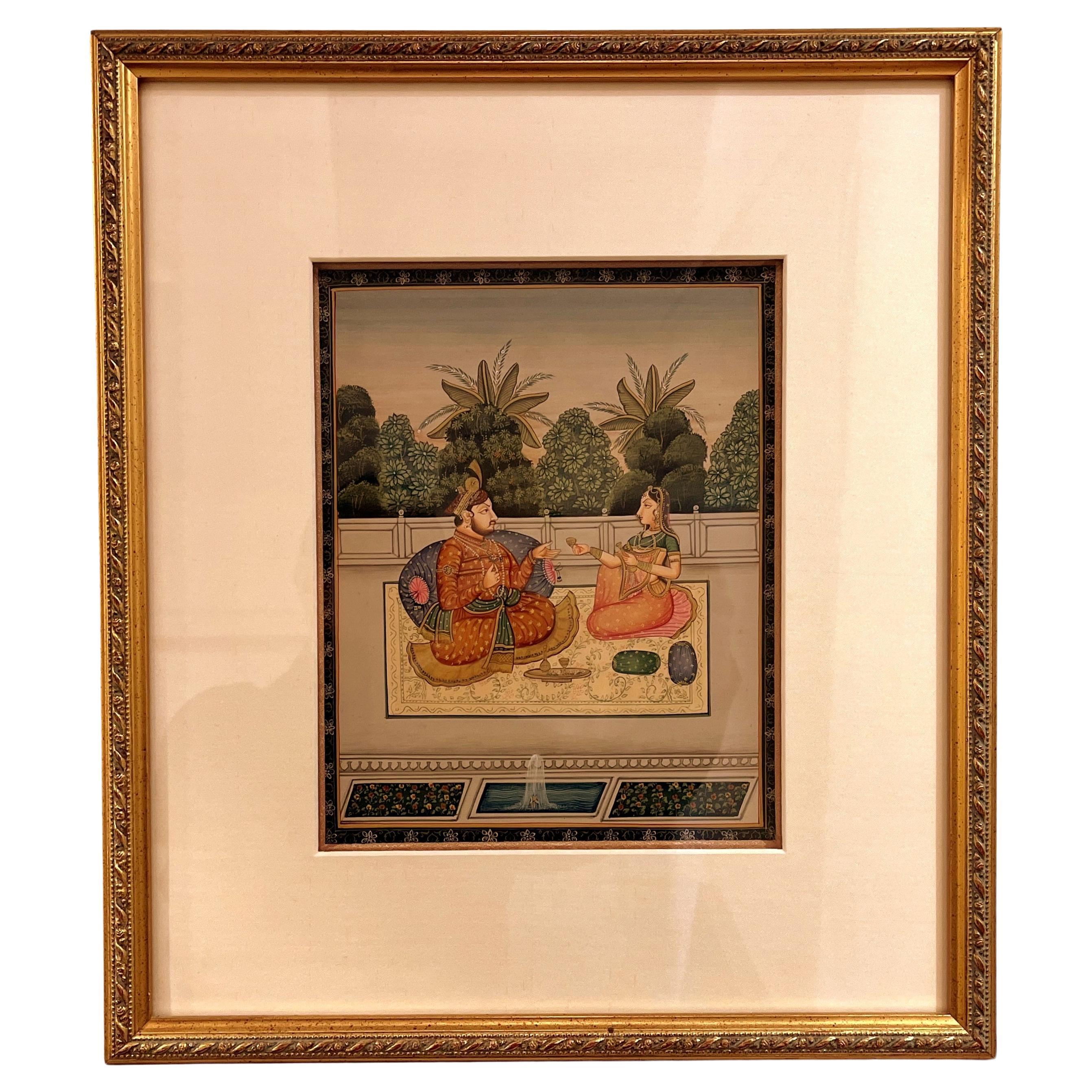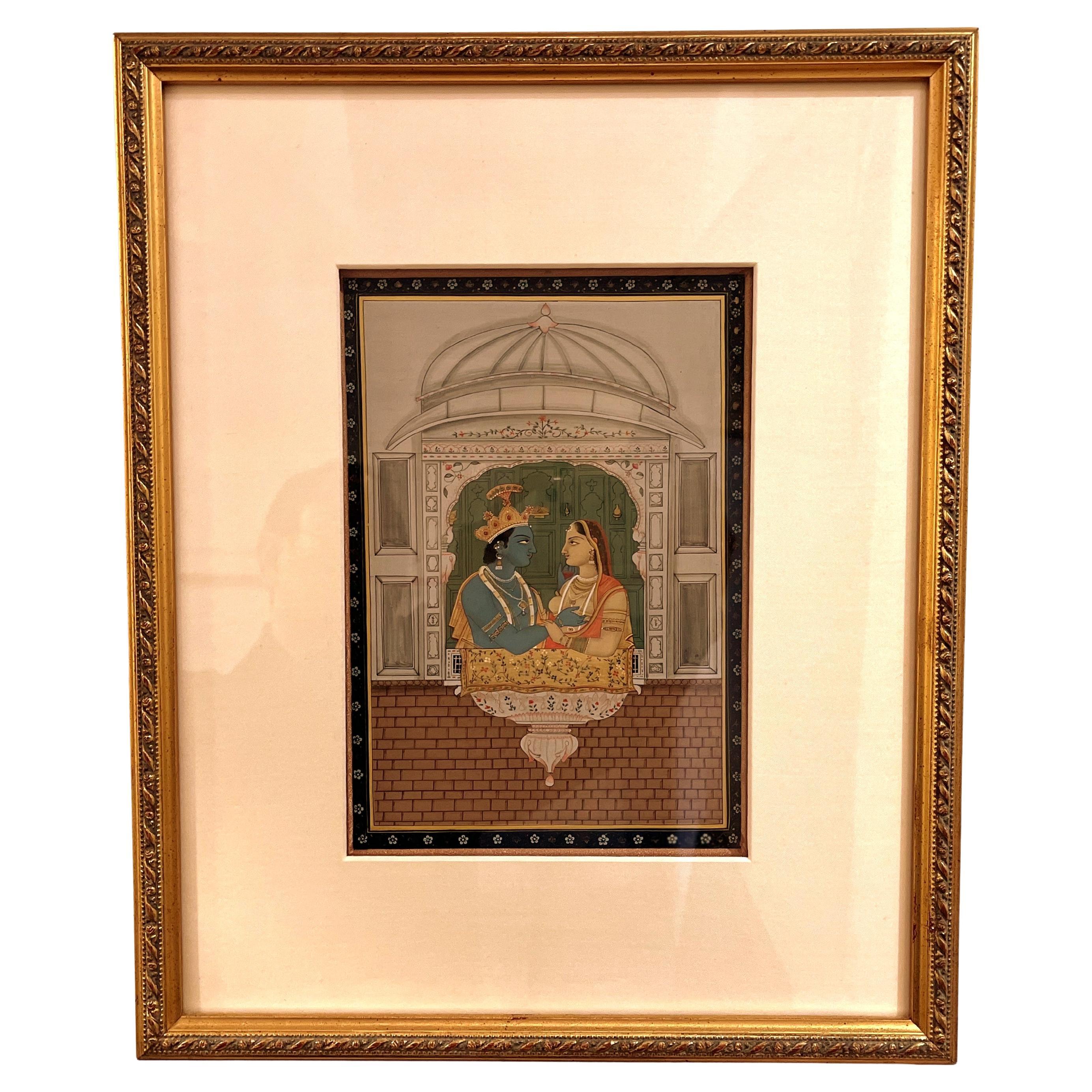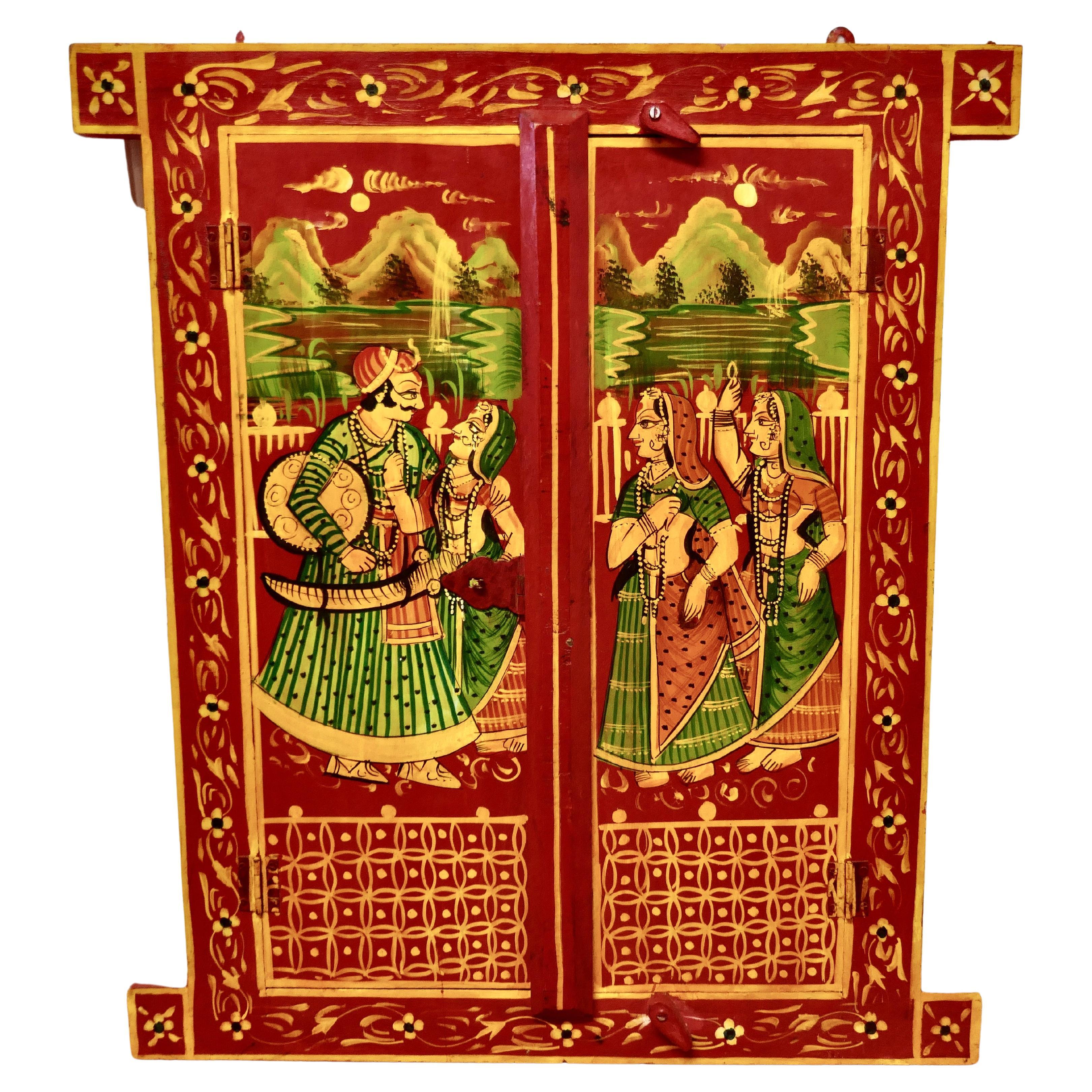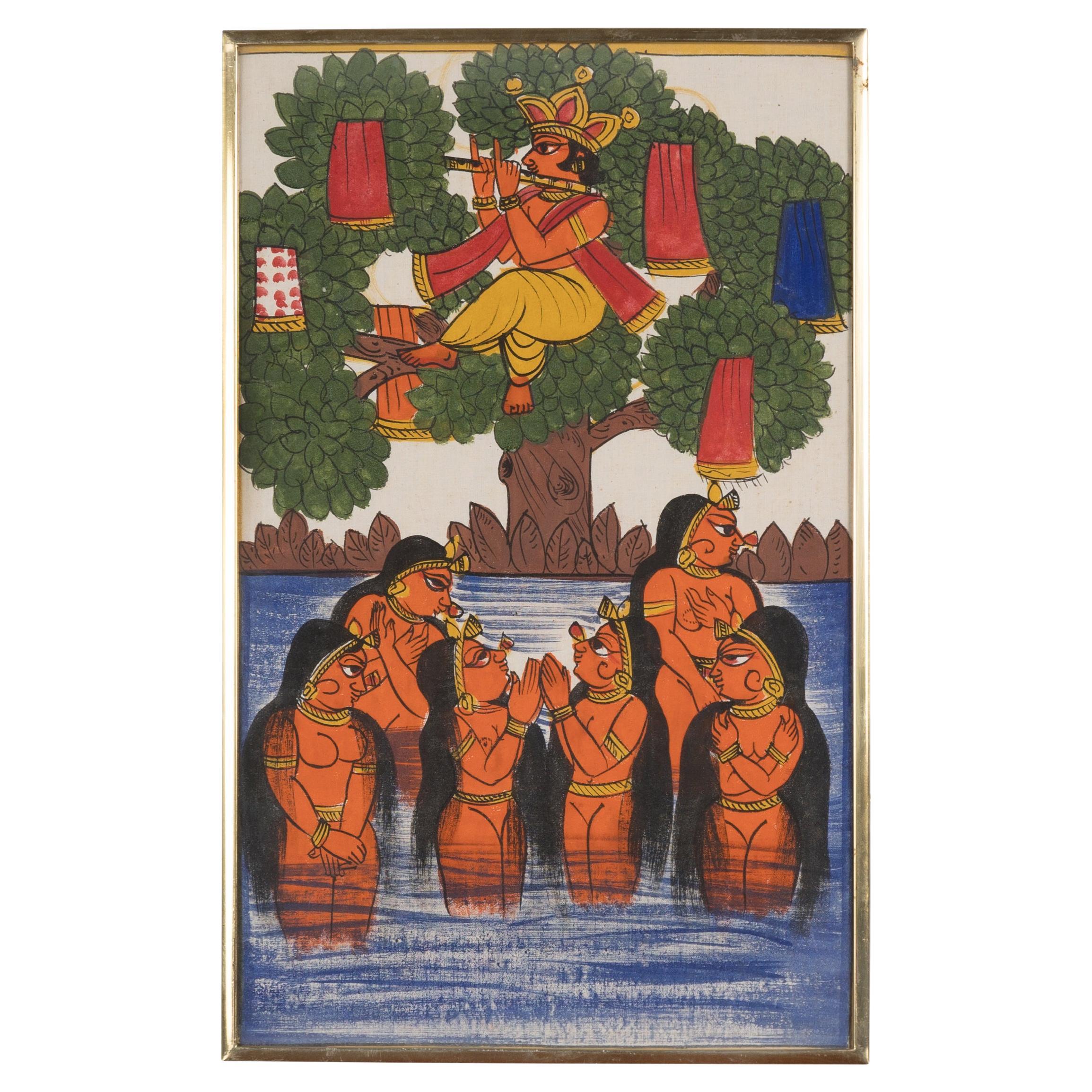Objekte ähnlich wie Anglo-Indian Company School Suttee Watercolour Paintings, C. 1810
Möchten Sie mehr Bilder oder Videos?
Zusätzliche Bilder oder Videos von dem*der Anbieter*in anfordern
1 von 16
Anglo-Indian Company School Suttee Watercolour Paintings, C. 1810
Angaben zum Objekt
A wonderful and singular set of two early 19th century Anglo-Indian Company School watercolour paintings, likely Murshidabad, depicting 'Sati' or 'Suttee', the historical practice in which a widow sacrifices herself by sitting atop her deceased husband's funeral pyre, and the procession to the pyre. The reverses labeled "From an album of watercolours and drawings belonging to Eliza Frederica Salmon and possibly her sister Mary Salmon, daughter of William Orton Salmon who served in India circa 1800-1824." Works measure 9" x 7" and are presented French matted in giltwood molded frames with beaded inner borders.
'Company School' is a style of miniature painting that developed in India in the second half of the 18th century in response to the tastes of the British serving with the East India Company. The style first emerged in Murshidabad, West Bengal, and then spread to other centres of British trade: Benares (Varanasi), Delhi, Lucknow, and Patna. The paintings were executed in watercolours on paper, ivory, and mica. Favourite subjects were scenes of Indian daily life, local rulers, and sets of festivals and ceremonies, in line with the “cult of the picturesque” then current in British artistic circles.
The 'Company School' artistic movement left an indelible mark on the Indian art scene, influencing subsequent generations of artists and shaping the way one perceives and appreciate art in India. The artists combined European techniques such as perspective and shading with traditional Indian styles, resulting in a distinctive fusion of artistic traditions. One of the key legacies of the Company Style is its documentation of Indian history, culture, and society during a significant period of colonial rule. The paintings provide a visual narrative of the people, landscapes, and customs of the time, offering valuable insights into the diverse fabric of Indian life. They capture the essence of a bygone era, preserving a visual record that helps one understand and appreciate the cultural heritage brought in with the emergence of Company rule in India. Furthermore, the Company Style played a crucial role in bridging the gap between Indian and European artistic traditions. By blending elements from both cultures, the paintings fostered cross-cultural dialogue and exchange. They introduced Indian aesthetics to European audiences and influenced the development of Orientalist art in the West. Similarly, the Company Style also introduced European techniques and perspectives to Indian artists, inspiring them to experiment and evolve their own artistic practices. The legacy of the Company Style of Paintings can be seen in contemporary Indian art, where the fusion of diverse influences continues to thrive. Many artists today draw inspiration from the Company painters, combining traditional techniques with modern approaches to create unique and engaging works of art. This enduring legacy ensures that the Company Style remains an important part of India's artistic heritage, reminding one today of the transformative power of cultural exchange and the beauty that emerges when different artistic traditions converge. The arrival of photography was a direct blow for the style, but it survived into the 20th century, Ishwari Prasad of Patna, who died in 1950, being perhaps the last notable exponent. In the late 19th century the British established several Schools of Art, where a yet more Westernised version of the style was taught, later in competition with other styles.
- Maße:Höhe: 41,28 cm (16,25 in)Breite: 45,72 cm (18 in)Tiefe: 2,88 cm (1,13 in)
- Verkauft als:Set von 2
- Stil:Anglo-indisch (Aus dem Zeitalter)
- Materialien und Methoden:
- Herkunftsort:
- Zeitalter:
- Herstellungsjahr:circa 1810
- Zustand:Abnutzung dem Alter und der Nutzung entsprechend.
- Anbieterstandort:Kinderhook, NY
- Referenznummer:1stDibs: LU1002137156252
Informationen zu dem*der Anbieter*in
5,0
Geprüfte*r Anbieter*in
Diese erfahrenen Anbieter*innen werden von unserem internen Expertenteam einer umfassenden Bewertung unterzogen.
Gründungsjahr 2012
1stDibs-Anbieter*in seit 2013
141 Verkäufe auf 1stDibs
- VersandAngebot wird abgerufen …Versand von: Kinderhook, NY
- RückgabebedingungenDieses Objekt kann nicht zurückgegeben werden.
Einige Inhalte dieser Seite wurden automatisch übersetzt. Daher kann 1stDibs nicht die Richtigkeit der Übersetzungen garantieren. Englisch ist die Standardsprache dieser Website.
Mehr von diesem*dieser Anbieter*inAlle anzeigen
- Chinesische Export-Umkehrglasmalerei von Kriegern in einer Landschaft, um 1825Ein feines CIRCA 1825 chinesischen Export polychrome Hinterglasmalerei eines Kriegers Gruppe mit Pferd und "Budai" in einer Flusslandschaft in Original "Chinese Chippendale" Paket ve...Kategorie
Antik, Frühes 19. Jahrhundert, Chinesisch, Chinesischer Export, Gemälde,...
MaterialienGlas, Holz, Vergoldetes Holz, Farbe
- Chinesisches Export-Reversglas-Porträtgemälde eines Opiummädchens, um 1880Eine wunderbare und äußerst seltene chinesische Export aus dem letzten Viertel des 19. Jahrhunderts für den anglo-indischen Markt Hinterglas-Porträtmalerei eines Opium rauchende Mädc...Kategorie
Antik, Spätes 19. Jahrhundert, Chinesisch, Chinesischer Export, Gemälde,...
MaterialienGlas, Vergoldetes Holz, Farbe
- Anglo-indisches Mahagoni mit kippbarer Platte und Pedestal als Beistelltisch oder Stand, um 1835CIRCA 1835 Beistelltisch oder -ständer aus massivem Mahagoni im anglo-indischen Regency-Stil mit quadratischer, kippbarer Platte mit gadroniertem Rand auf einem schilfgeschnitzten un...Kategorie
Antik, Frühes 19. Jahrhundert, Indisch, Anglo-indisch, Tische
MaterialienMahagoni
- Anglo-indische Klismos-Stühle aus massivem Ebenholz, Sechser-Set, Ceylon, um 1830Eine seltene und exquisite Reihe von circa 1830 anglo-indischen, anglo-keylonesischen oder Sri Lankan Galle Bezirk hergestellt geschnitzt massivem Ebenholz Esszimmerstühle der neokla...Kategorie
Antik, Frühes 19. Jahrhundert, Sri-lankisch, Anglo-indisch, Esszimmerstühle
MaterialienMessing
- Chinesische anglo-indische Markt-Elefanten- und Mahout-Teller für den Export, Paar, um 1760Ein sehr feines und außergewöhnlich seltenes Paar großer chinesischer Exportkutschen für den anglo-indischen Markt aus der Qianlong-Periode um 1760. Die geformten und muschelförmigen...Kategorie
Antik, Mitte des 18. Jahrhunderts, Chinesisch, Chinesischer Export, Tonw...
MaterialienPorzellan
- Aufwändig geschnitzter und bemalter anglo- burmesischer Teakholzsessel, um 1880CIRCA 1880 Anglo-indischer, anglo-burmesischer Sessel von guter Größe mit einem komplizierten, durchbrochen geschnitzten Teakholzrahmen, der tief korallenrot lackiert ist. Der geschw...Kategorie
Antik, Spätes 19. Jahrhundert, Birmanisch, Anglo Raj, Sessel
MaterialienTeakholz
Das könnte Ihnen auch gefallen
- Antiker anglo-indischer/ burmesischer Stuhl, Profusely Handgeschnitzte Dekoration, 19. JahrhundertFeiner antiker anglo-indischer/ burmesischer Stuhl, reichlich handgeschnitzt Dekoration 19. Jahrhundert Dieser antike burmesische Stuhl besticht durch sein exquisites, reich geschn...Kategorie
Antik, 1860er, Indisch, Anglo-indisch, Gemälde, Leinwände und Raumteiler
MaterialienHolz
- Feines Gemälde eines indischen Hofes, gerahmtGerahmte raffinierte indische Hofmalerei, schöne Farben und Blattgold, exquisite Details, 19. Jahrhundert, Konservierung gerahmt Gesamtgröße mit Rahmen: 14,8" Breite 17" Höhe Bildg...Kategorie
Antik, 19. Jahrhundert, Indisch, Gemälde, Leinwände und Raumteiler
MaterialienPapier
- Feines Gemälde eines indischen Hofes, gerahmtGerahmte raffinierte indische Hofmalerei, schöne Farben und Blattgold, exquisite Details, 19. Jahrhundert, Konservierung gerahmt Gesamtgröße mit Rahmen: 14" Breite 17" Höhe Bildgr...Kategorie
Antik, 19. Jahrhundert, Indisch, Gemälde, Leinwände und Raumteiler
MaterialienPapier
- 19. Jahrhundert, um 1840, Aquarell Gouache Chinesische Guangdong-Schule, Lotusernte, Chinesische Guangdong19. Jahrhundert Chinesische Export Reispapier Bild Aquarell und Gouache Studien auf Reispapier der Ernte Lotusblumen, zwei Tafeln zusammen montiert, leuchtenden kräftigen Farben, jed...Kategorie
Antik, Mittleres 19. Jahrhundert, Chinesisch, Gemälde, Leinwände und Rau...
MaterialienGlas, Kiefernholz, Papier
- Indische Miniatur-Türen, Volkskunst-SchubladenIndische Miniaturtüren, Folk Art Fensterläden Diese schönen gerahmten Türen sind wunderschön und hell von Hand mit indischen Charakteren in traditioneller Kleidung bemalt. Die be...Kategorie
Antik, Spätes 19. Jahrhundert, Anglo Raj, Gemälde, Leinwände und Raumteiler
MaterialienFarbe
- Indisches, antikes, handbemaltes VolkskunstgemäldeEin antikes indisches handgemaltes Volkskunstgemälde, das sechs Jungfrauen und einen Musikanten darstellt. Ein bezauberndes Stück indischen Kulturerbes, ein antikes Volkskunstgemälde...Kategorie
Frühes 20. Jahrhundert, Indisch, Gemälde, Leinwände und Raumteiler
MaterialienMessing





